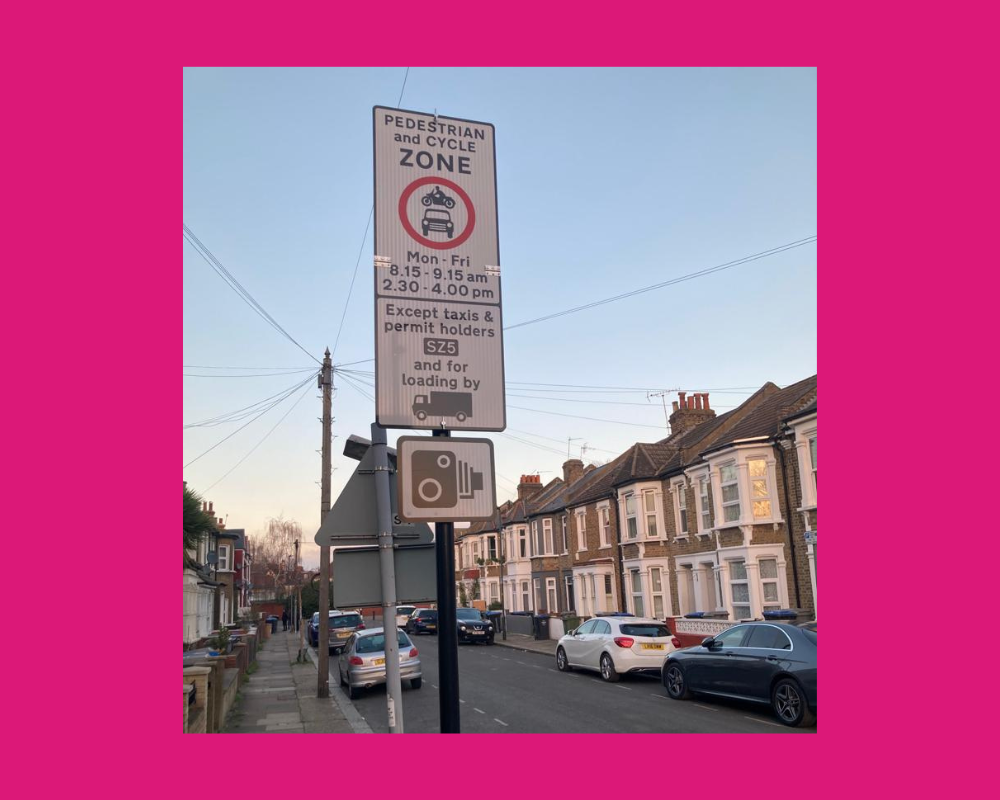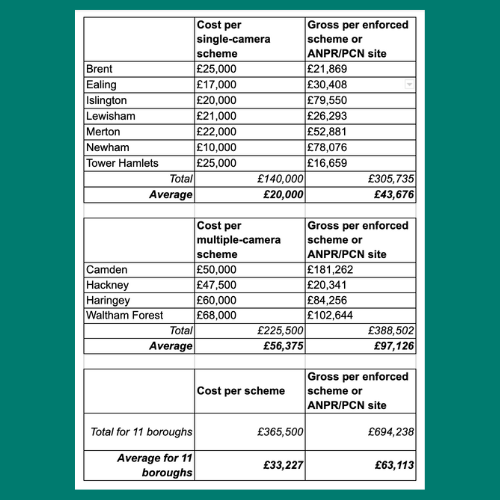School Streets camera costs research
24th January 2023
Image: Amandine Alexandre
Our new research shows that using automatic number plate recognition (ANPR) cameras to enforce School Streets means they are also self-funding within their first year, with London’s existing 500+ school streets currently creating a £31m revenue stream.
We are passionate advocates for School Streets due to their impact on air pollution and road safety; they have been shown to reduce air pollution by 23%, with an 81% approval rate. We would like to see School Streets implemented as extensively as possible but understand that sometimes the cost of enforcing them is seen to be too high for councils managing tight budgets.
School Streets Freedom of Information requests
We recently sent out Freedom of Information requests to every London borough, requesting information on the costs of School Street ANPR cameras and the revenue they created. We have completed a data analysis of the thirteen responses we received [data can be found in the table below].
The summary is: in the first year of operation, School Streets recoup the capital costs of investment. From the eleven London boroughs with sufficient data to analyse, we discovered that to set up a School Street with a multi-camera ANPR scheme costs on average £56,375 (around £20,000 for a single-camera scheme) and returns on average £63,113 per year in penalty enforcement notices.
Across the 500+ School Streets in London, we estimate that London boroughs are currently collecting around £31 million annually in fines revenue. While there will be some variations over time, as drivers change routes, we do not see a significant drop off in revenue where School Streets have been in place for more than 1 year.
School Streets funding stream
£31 million is a substantial amount of money. We believe it should be used to target air pollution around all schools - not just the ones that have School Streets. We have provided some example calculations to prompt discussion of what an annual £31 million revenue stream could support after costs are met in Year 1:
£12.8m could fund school enforcement officers (‘lollipop people’) for all 1,800 state primaries in London, working 5 days a week at drop off and pick up (3 hours total).
£15m could be spent on funding green screens and playground planting at the 500 most polluted primary schools.
£1m could be spent on a digital and real world awareness-raising campaign to encourage active travel and discourage idling at school, better enforced School Streets and other measures to reduce pollution around schools. This would work out as around £30,000 per borough to be spent on targeted public health messages.
We understand that revenue is collected and spent within boroughs, these figures are an illustration.
There are approximately 1,800 state primary schools in the capital - so that’s about 1,300 without a School Street. Expanding the scheme where possible would reduce air pollution at those schools but also increase revenue that could be used for air pollution reduction measures at other schools, ensuring equity, as well as maintaining public confidence that fines are being well used.
Table shows costs and money raised from camera-enforced School Street schemes in eleven London boroughs


